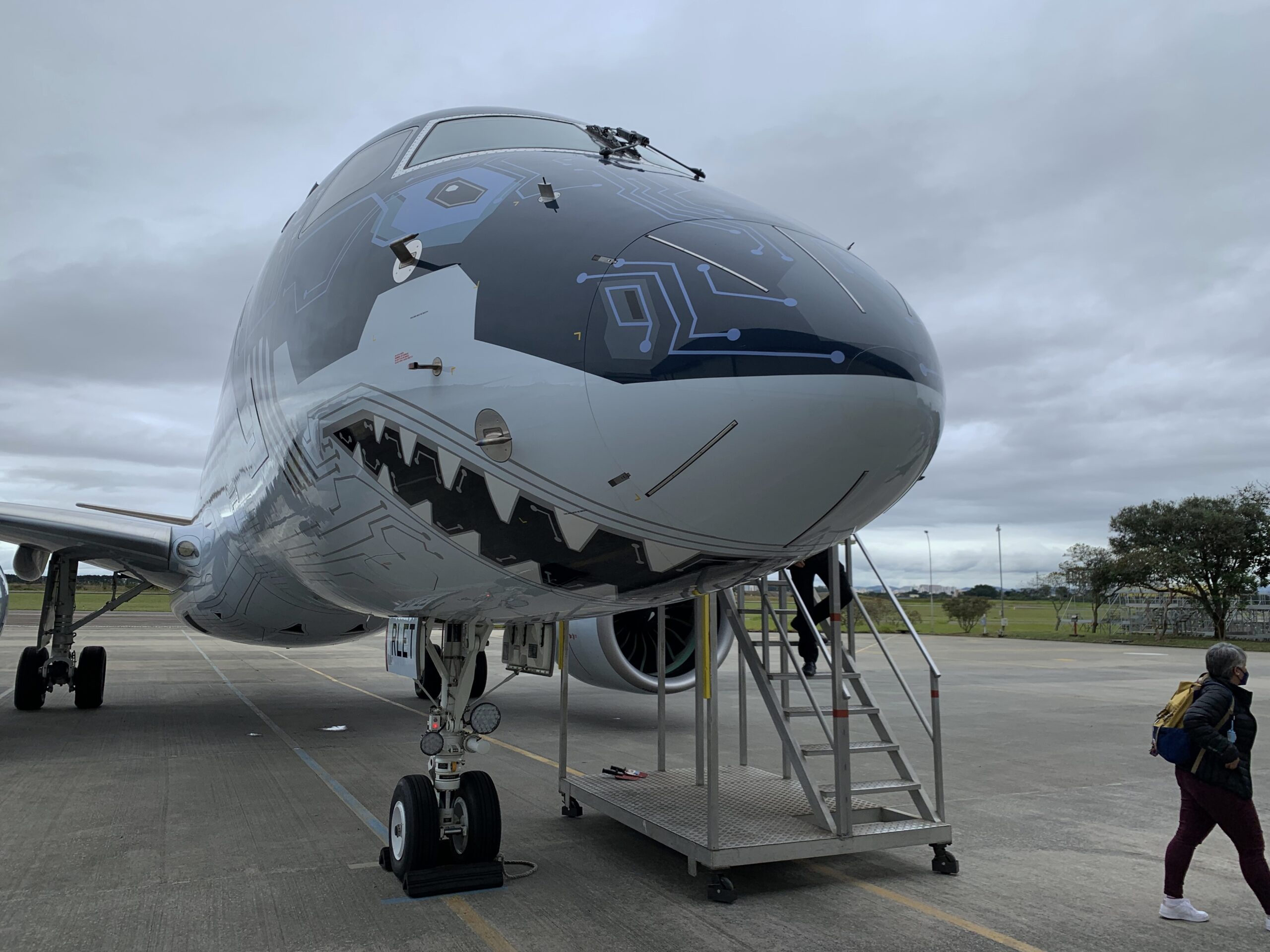
IMG 2252 scaled
UPDATE – Embraer reported a higher pre-tax operating profit and turned a net loss into a net profit for the full year 2022, thanks to a strong fourth quarter. All business units contributed positively to the results, but Commercial Aviation performed best. Yet, the net result for shareholders is still negative.
The Brazilian airframer posted a $270.3 million Adjusted EBIT for the full year compared to $167 million in 2021. Revenues increased to $4.540 billion from $4.197 billion. Adjusted EBITDA was $458.9 million, up from $362.5 million, resulting in an Adjusted EBITDA margin of 10.1 percent. The Adjusted net result was a $38.5 million profit, up from a $-28.9 million net loss. The loss attributable to shareholders was $-185.4 million, up from $-44.7 million in 2021. Adjusted free cash flow improved significantly to $477.6 million from $292.4 million.
Embraer’s year was very much backloaded, with most of the commercial aircraft and executive jet deliveries in Q4: 30 and 50 respectively. This brought total deliveries to 57 E-jets and 102 business jets and contributed to a strong Q4, with an Adjusted EBIT of $166.2 million versus $56.2 million in the previous year. The net Adjusted net income of $43.2 million was lower compared to $57.2 million in Q4 2021, but the result attributable to shareholders was much higher: $22.9 million versus $2.1 million.
Commercial Aviation contributed most to the revenues last year, with $1.554 billion versus $1.316 billion in 2021. This reflects nine more deliveries year on year, which is mirrored by Executive Jets. This unit generated ten percent higher revenues of $1.244 billion. Services & Support produced $1.267 billion in revenues, up twelve percent thanks to more “pay by the hour” revenues from Commercial Aviation contracts and a bigger market share of business jets. Defense & Security produced 24.7 percent lower revenues of $448 million as fewer Super Tucano trainers were delivered.
Net debt stood at $949.8 million, down from $1.523 billion in December 2021, which helped improve free cash flow in Q4. Liquidity stood at $3.131 billion. This includes $650 million in a revolving credit facility. Embraer has low maturities until 2025 when $975 million is due.
Delivery targets
As supply chain issues continued for most of the year, Embraer failed to meet its delivery targets for 2022. Instead of 60-70 commercial aircraft and 100-110 executive jets, it delivered 57 and 102 respectively. For this year, the airframer targets 65-70 deliveries for E-jets and between 120 and 130 Phenoms and Praetors. This should boost revenues to between $5.2 and $5.7 billion and the Adjusted EBITDA margin to between ten and eleven percent, free cash flow to around $150 million.
The supply chain will still have challenges this year, CEO Francisco Gomes Neto said, especially from the engine manufacturers. “Engines are very critical items, but there are other issues as well. Hydraulic systems and pieces of equipment. We are still managing, but that’s why we say that this year will still have challenges in the supply chain. (…) Our aircraft production is slower because of the number of engines that we are receiving. But the other problem is receiving those parts with delays. We have to be flexible in our production line, as it impacts time and inventory levels, and other indicators. Towards the second half, we believe things will pick up but only go back to normal in 2024.” Staff shortages are of the least concern to Embraer: “In operations, we don’t see any problems.”
Gomes Neto said Embraer is aware of the technical issues with the Pratt & Whitney Geared Turbofans that force customers like KLM Cityhopper to ground numerous new aircraft. Asked how Embraer is pushing P&W to solve the issues, Gomes Neto said that Pratt is working closely to support them with short-term solutions while working on a long-term fix of the issues. Embraer itself is also doing whatever it can to support its customers in dealing with the Geared Turbofan problems.
Embraer grew its backlog by $0.5 billion year on year to $17.5 billion, of which 49 is from Commercial Aviation, 22 percent from Executive Jets, fifteen from Services & Support, and fourteen from Defense & Security. The number of E-jets in the backlog is 291: 194 E195-E2, 90 E175, and seven E190-E2.
2023 a year of growth
After three difficult years, the focus for 2023 is on the growth of revenues and profitability. Aircraft slots for 2023 and 2024 are at almost full capacity for both commercial and executive, Francisco Gomes Neto said. The airframer has very sales campaigns underway and recently announced an order for fifteen E195-E2s from an undisclosed customer. The certification of the E190-E2 in China opens new doors: “There are some campaigns and we hope to announce deals soon.”
However, the Embraer CEO thinks it will take a few more years before the market for the E175 in North America will recover, the result of the pilot shortages at many US regional airlines. “Only in 2025, things will get back to normal. 2023 and 2024 will be difficult years because of pilot shortages in that segment. When things get back to normal, we believe there will be an uptake of orders for the E175.”
Asked if Embraer is still interested in collaborating with partners in India, Gomes Neto said that there could be options for that on the C-390 transporter, but it will take at least two years before a decision is made. “But of course, Embraer is willing to establish any kind of partnership with local partners to meet our customer needs in India, be it in commercial or defense aviation customers, so that we can expand our sales.”
Views: 24




